Abstract
By the early 1950's, it was clear from numerous independent reports that certain of the broad-spectrum antibiotics were effective against the agent of trachoma. It seemed, however, that treatment had to be continued over long periods to effect a cure of the average case. With the assistance of WHO, comparative trials on a scale hitherto unprecedented in the disease—involving more than 9000 schoolchildren with active trachoma—have been conducted in Morocco since 1953 in order to assess the value of local treatment of trachoma with chlortetracycline and to develop simple and economic methods of treatment, for which there was a pressing need. Local application of 1% chlortetracycline ointment two or three times daily for 60 days gave almost 80% cures under reasonably favourable conditions and nearly 100% cures after re-treatment of cases not cured by the first course. Equally good results followed intermittent short-term treatment over longer periods. Relapse and reinfection rates were low.
Collective mass treatment with antibiotics is clearly a valuable method of trachoma control. The use of intermittent treatment allows for a great economy both in antibiotics and in staff and other campaign expenses and makes possible the wide expansion of mass treatment programmes.
Full text
PDF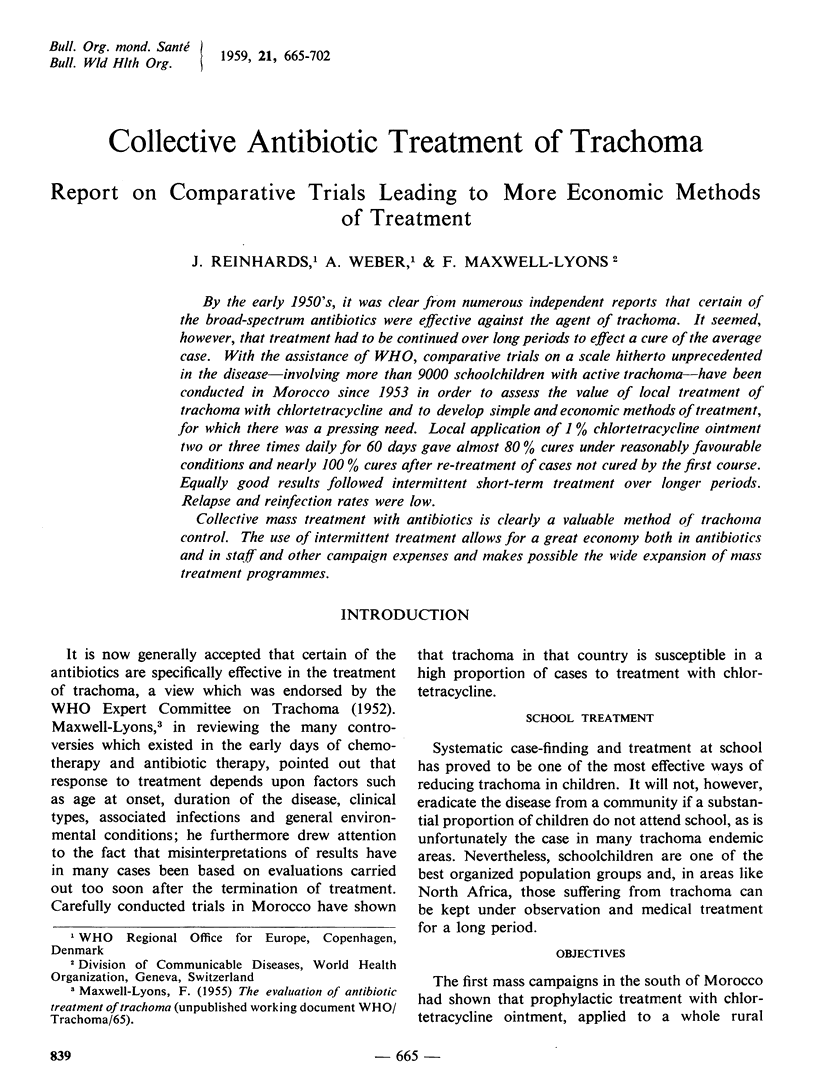
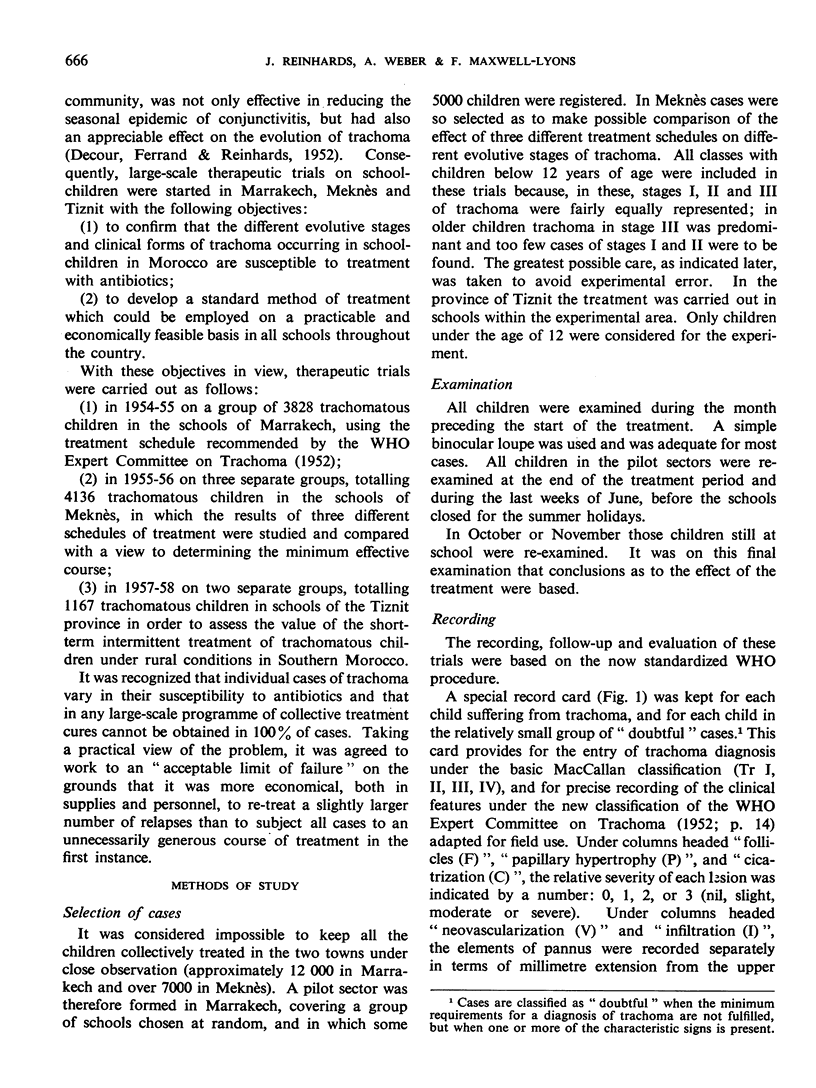

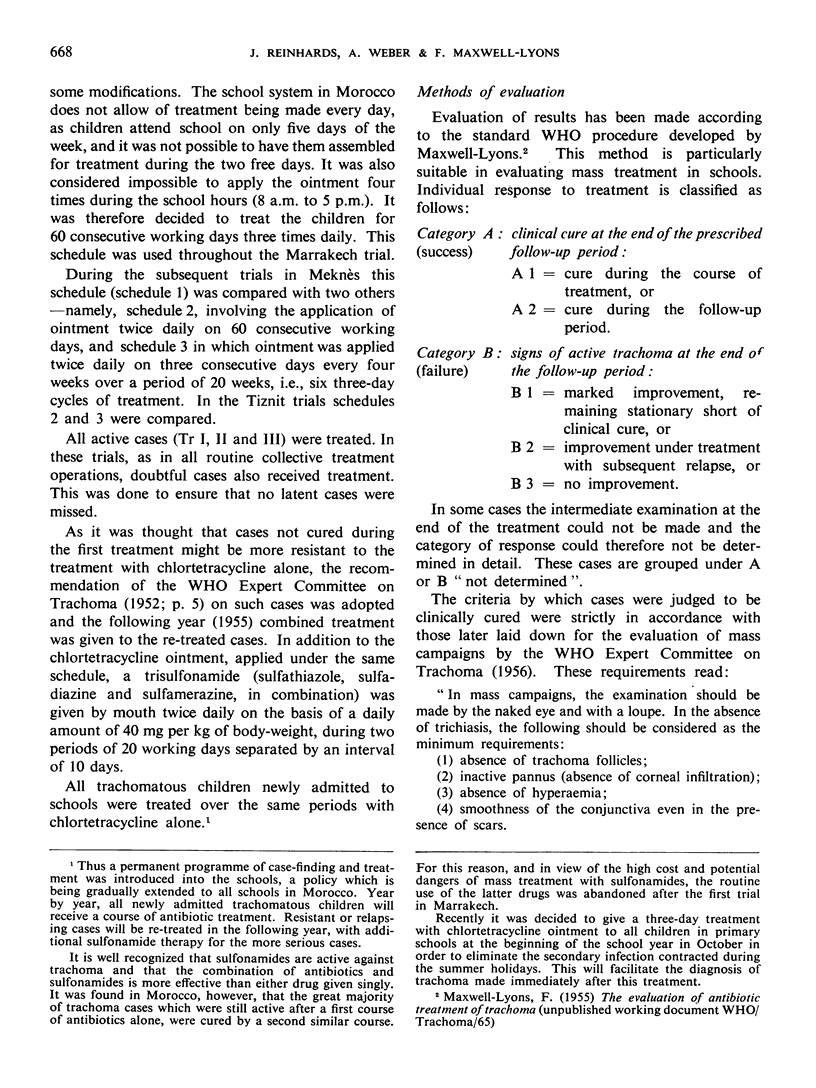
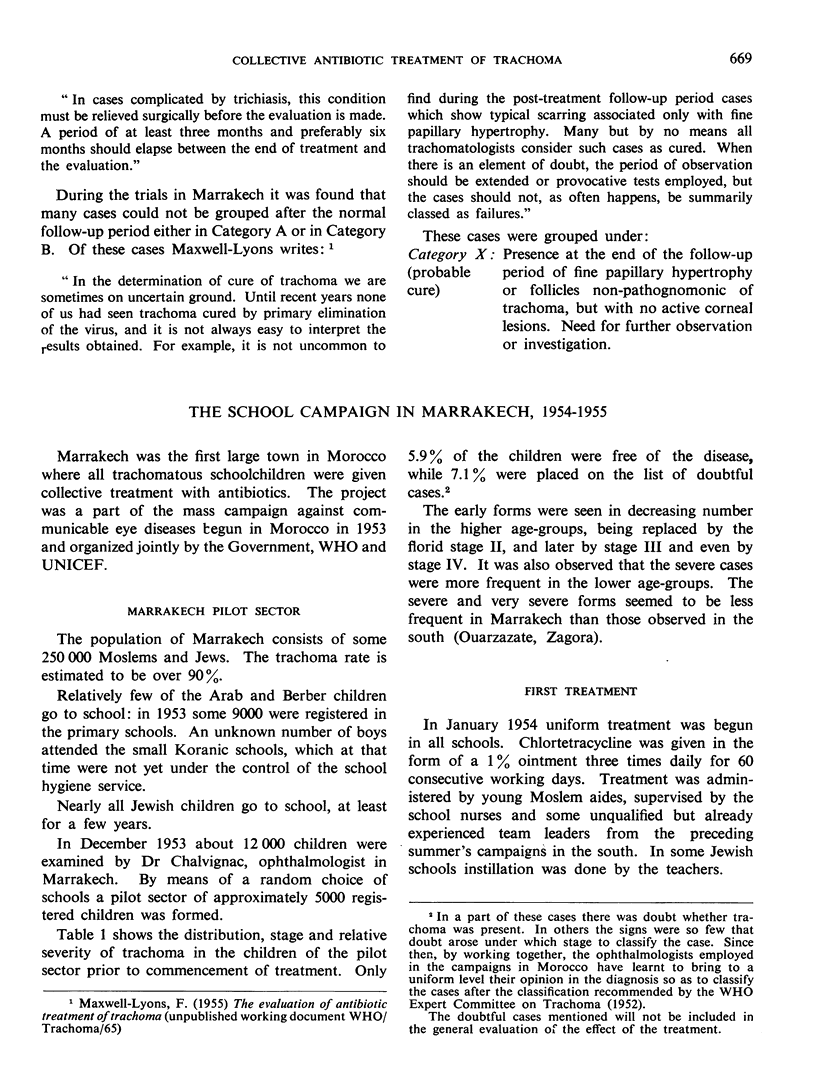
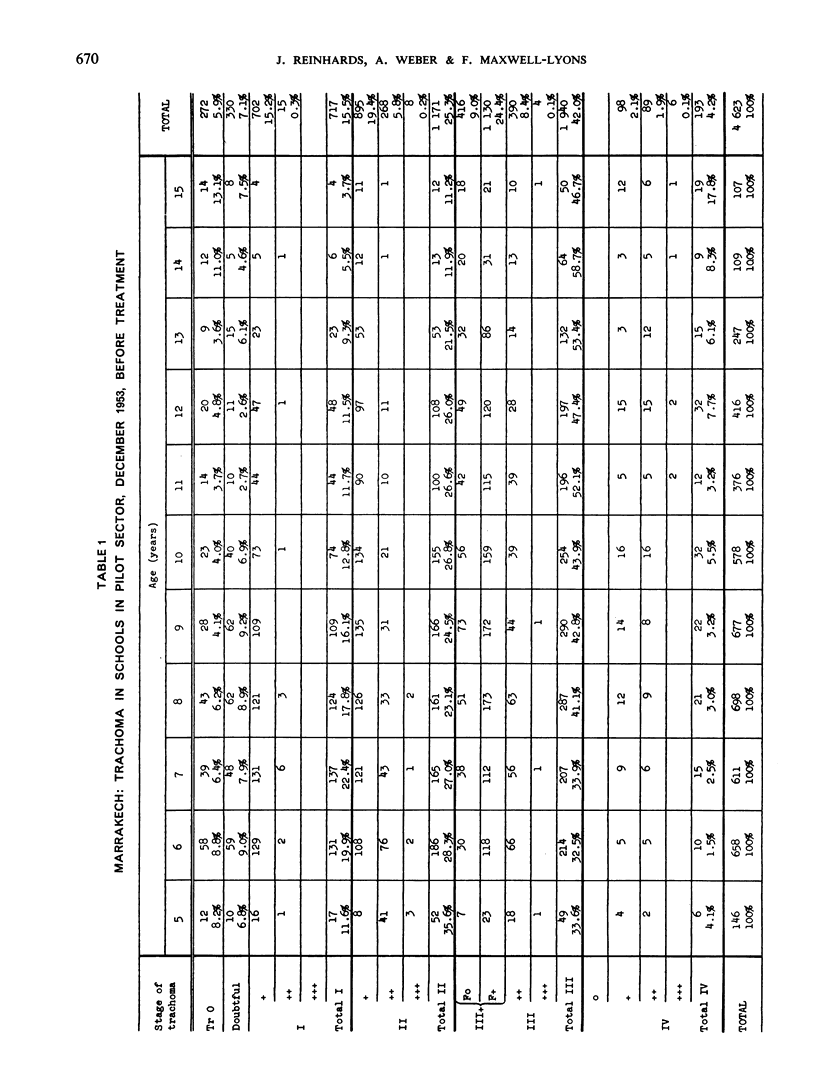
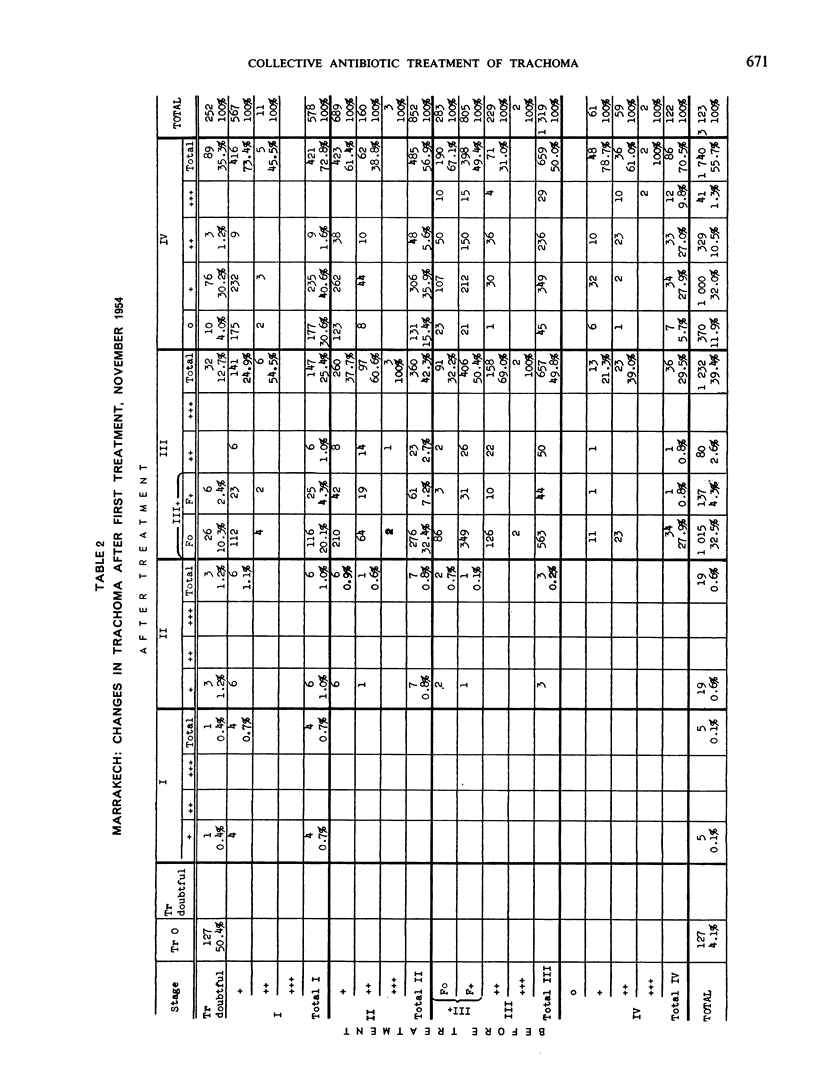
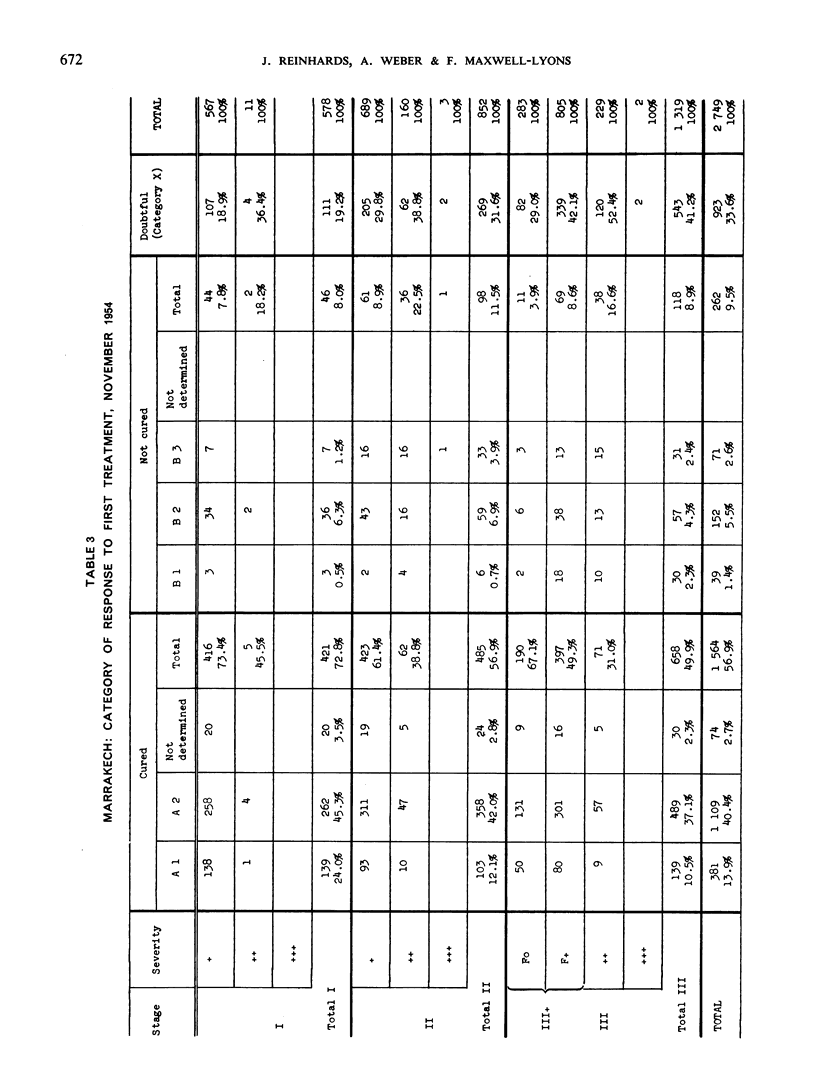
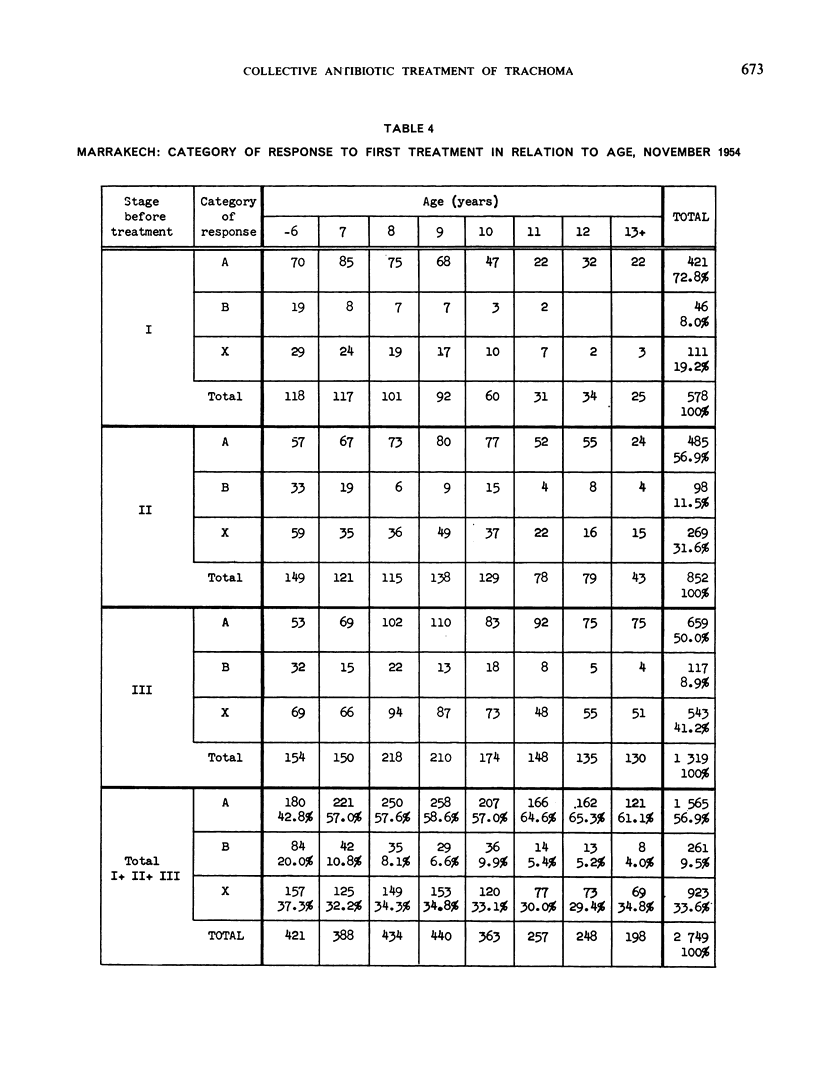
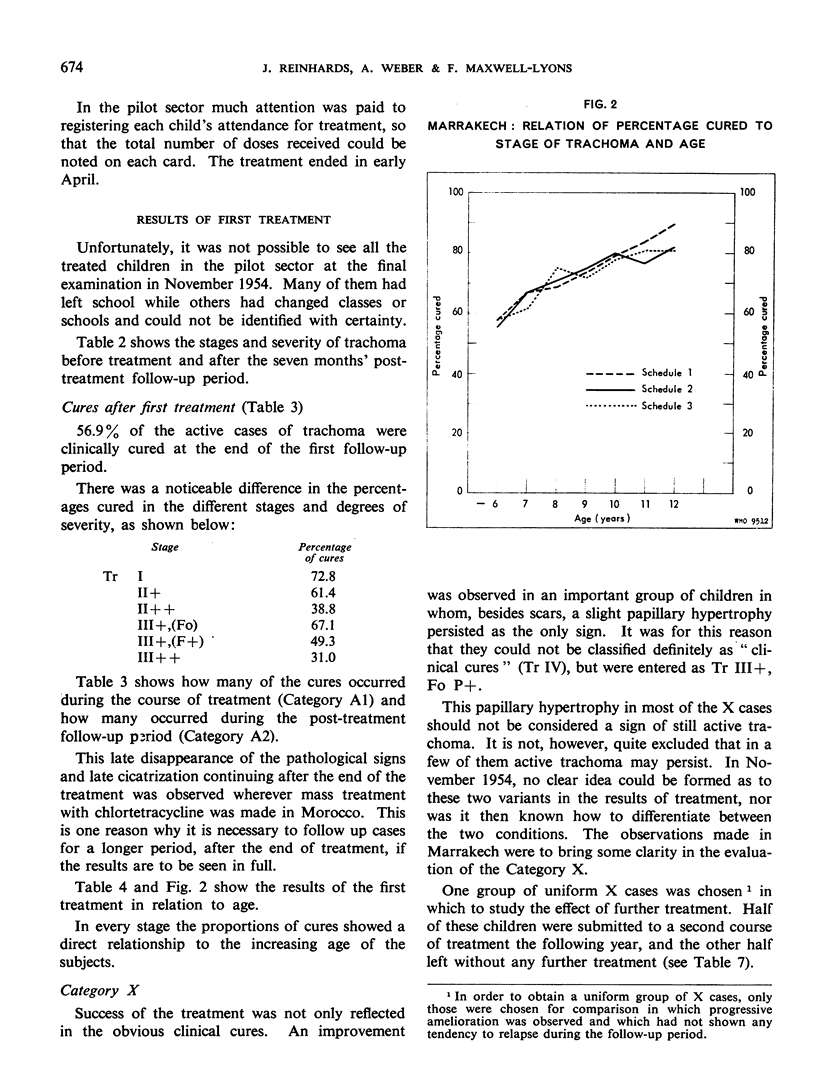
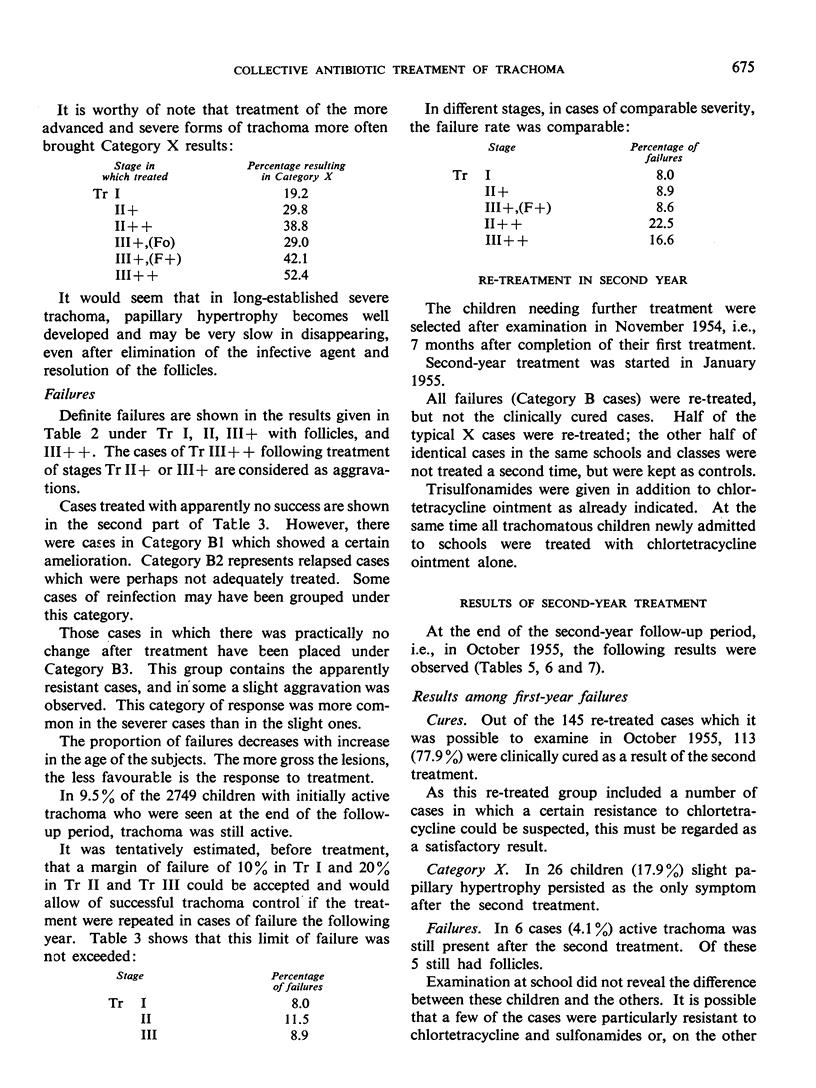
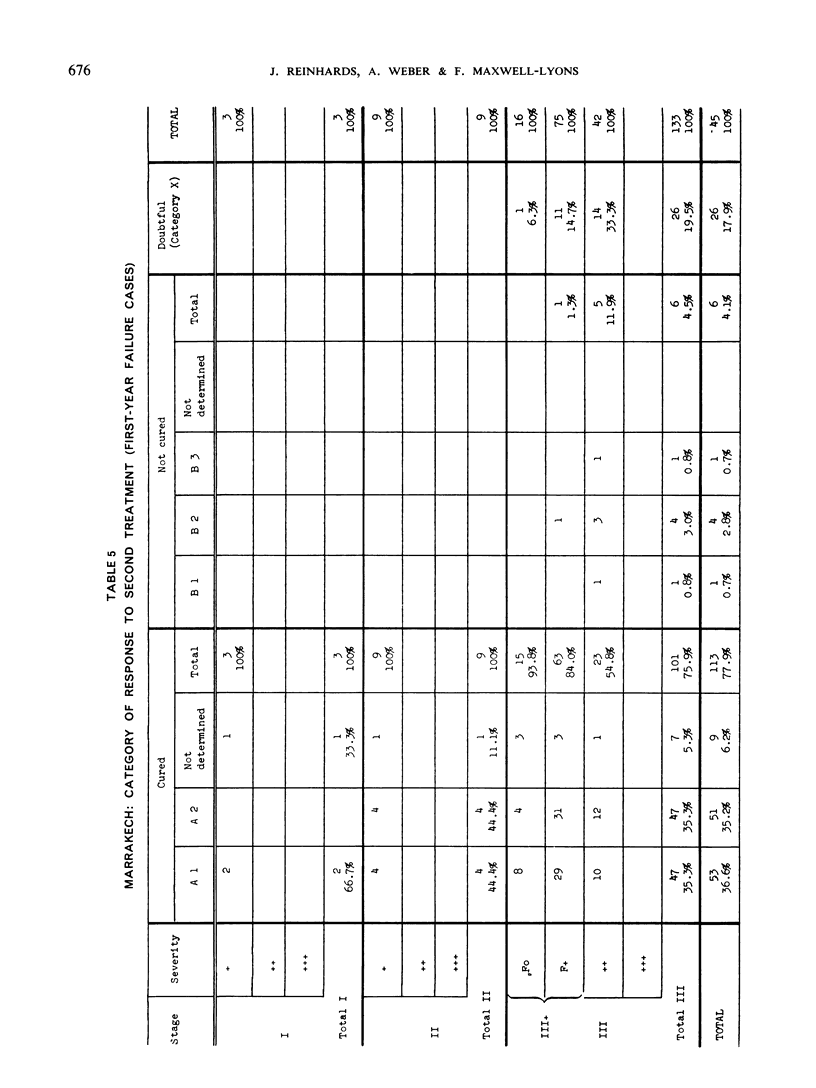

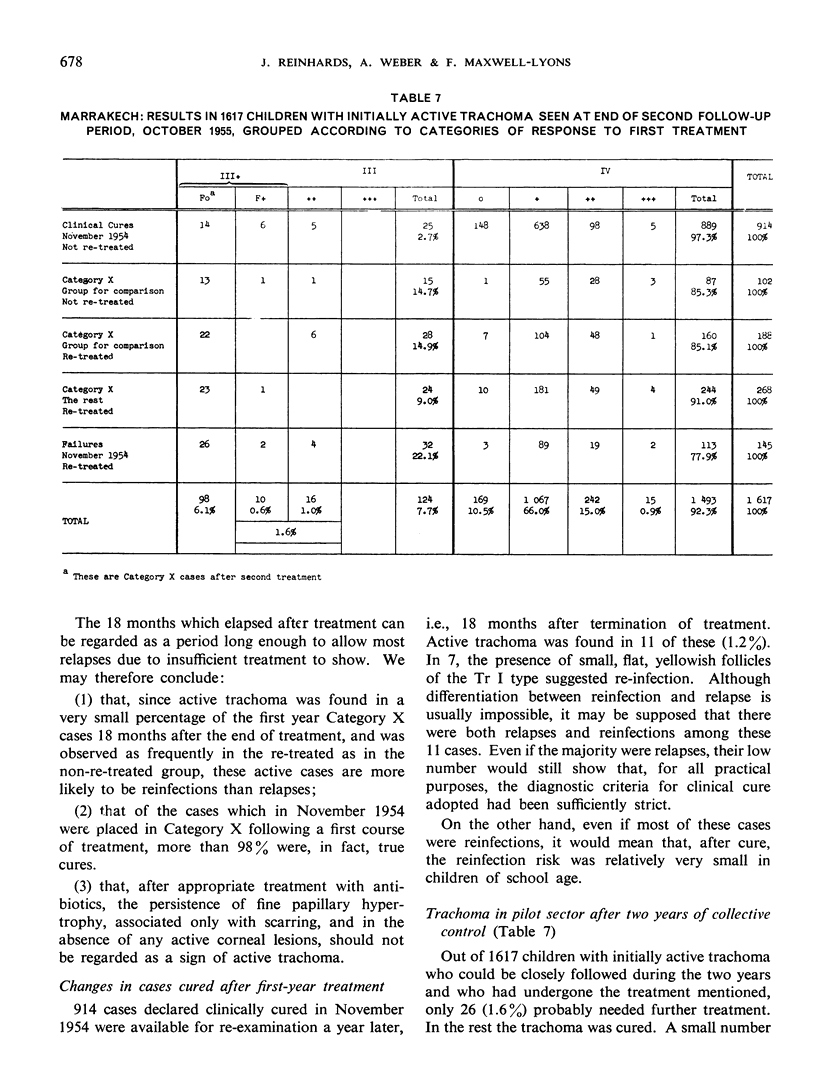
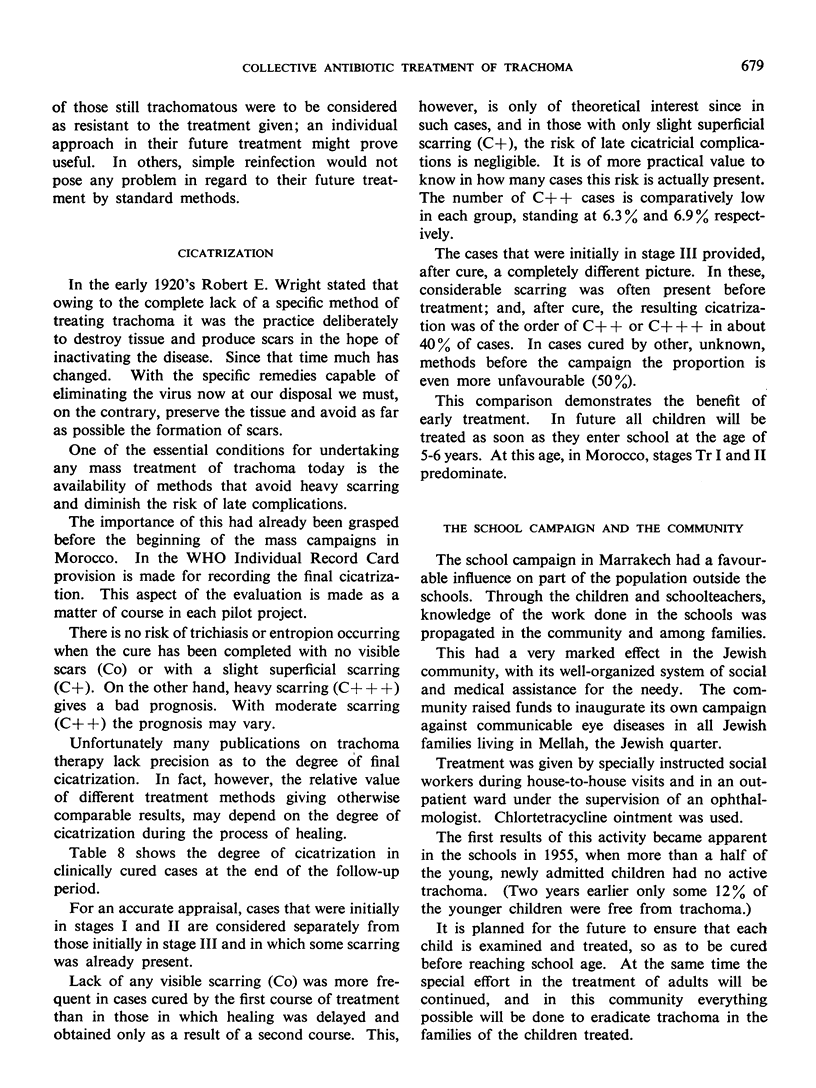
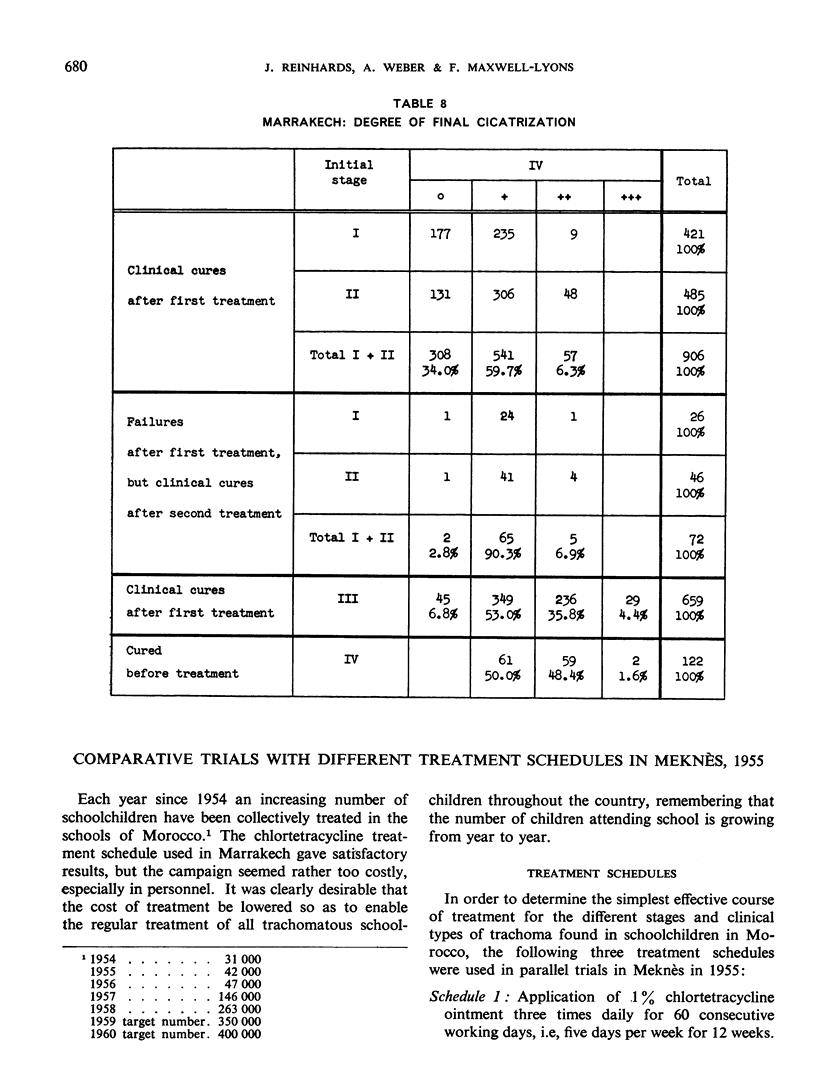
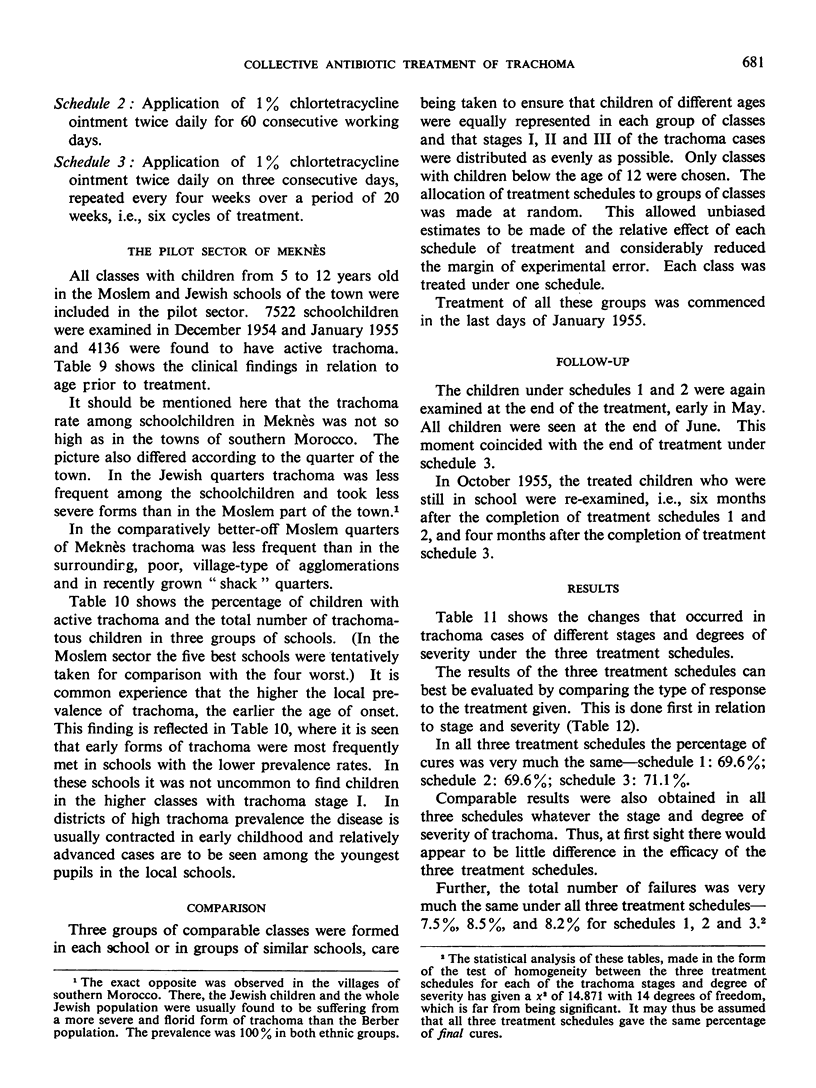
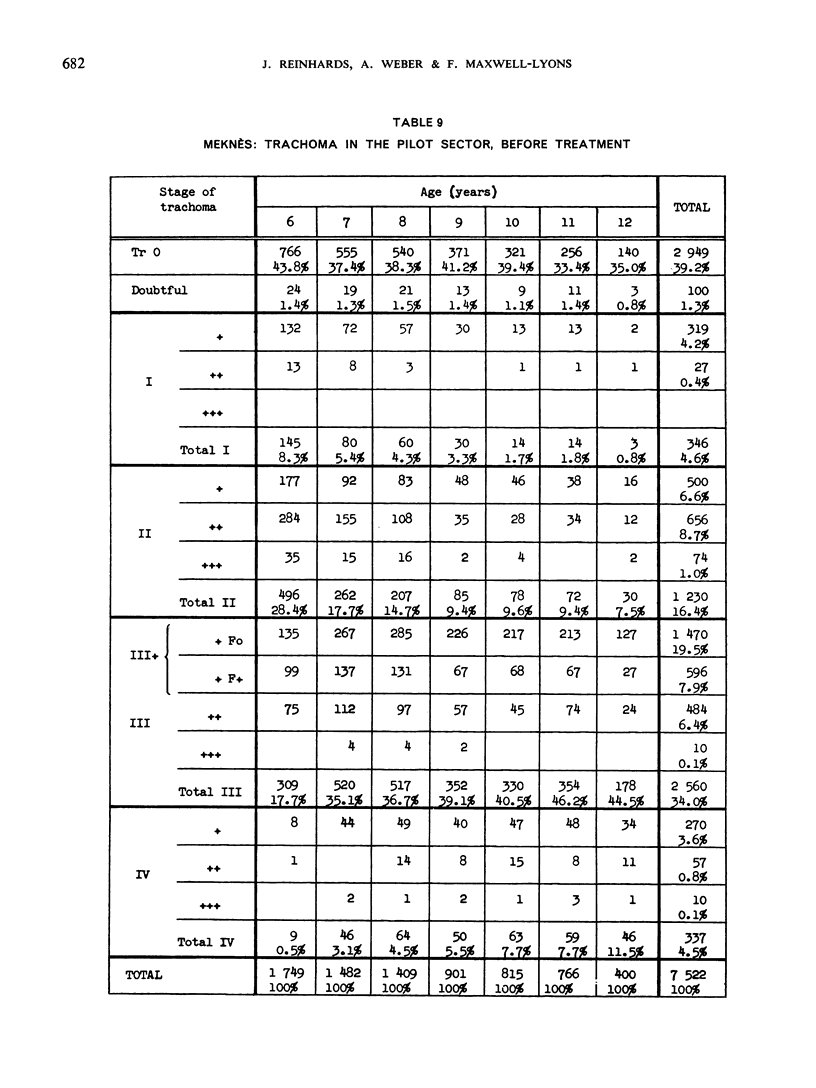
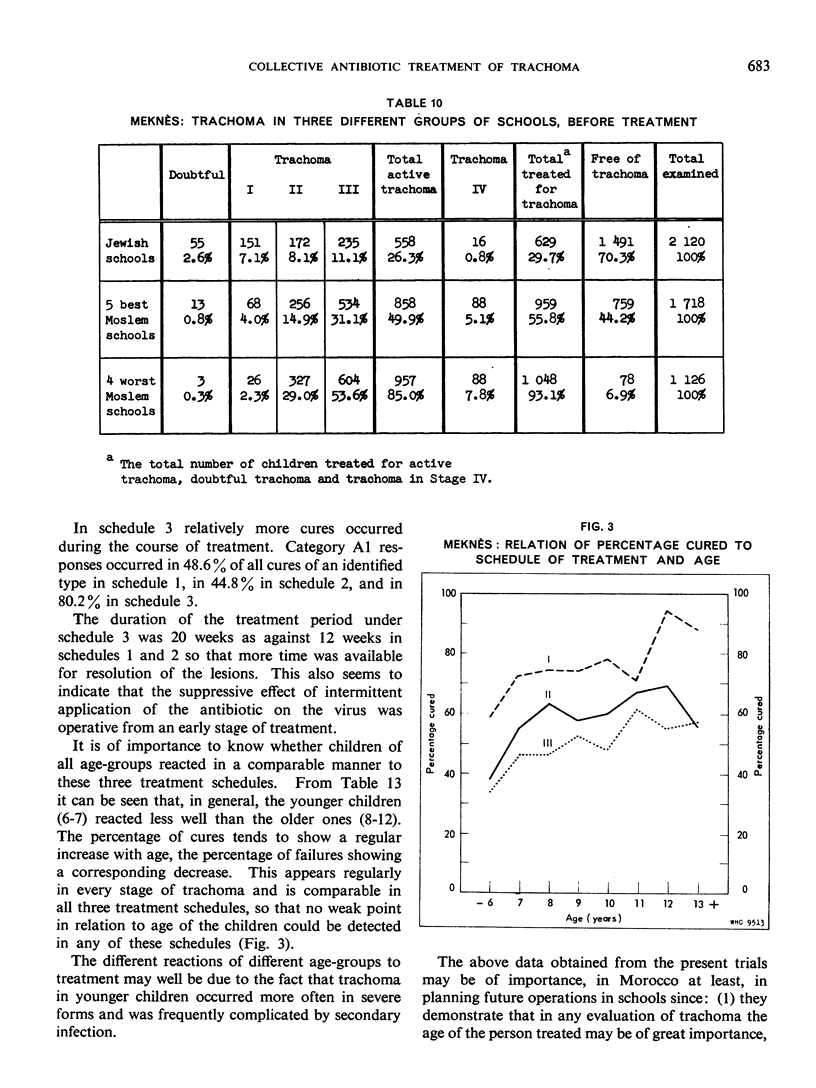
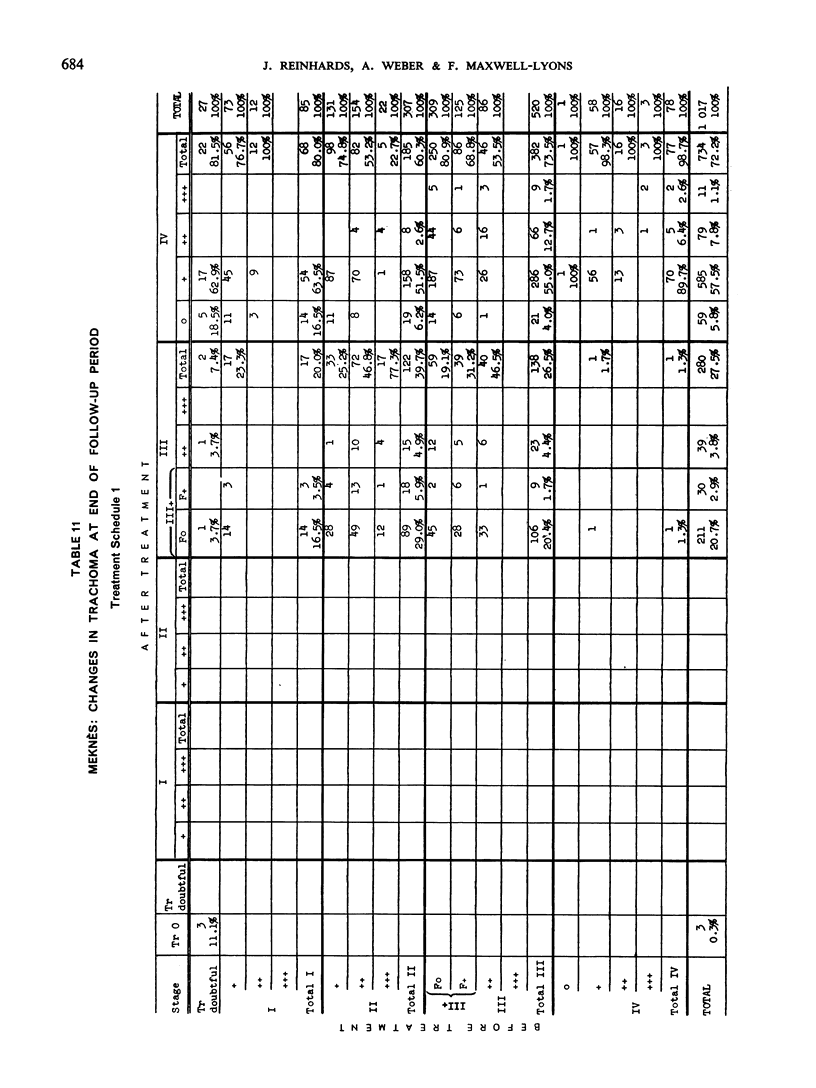
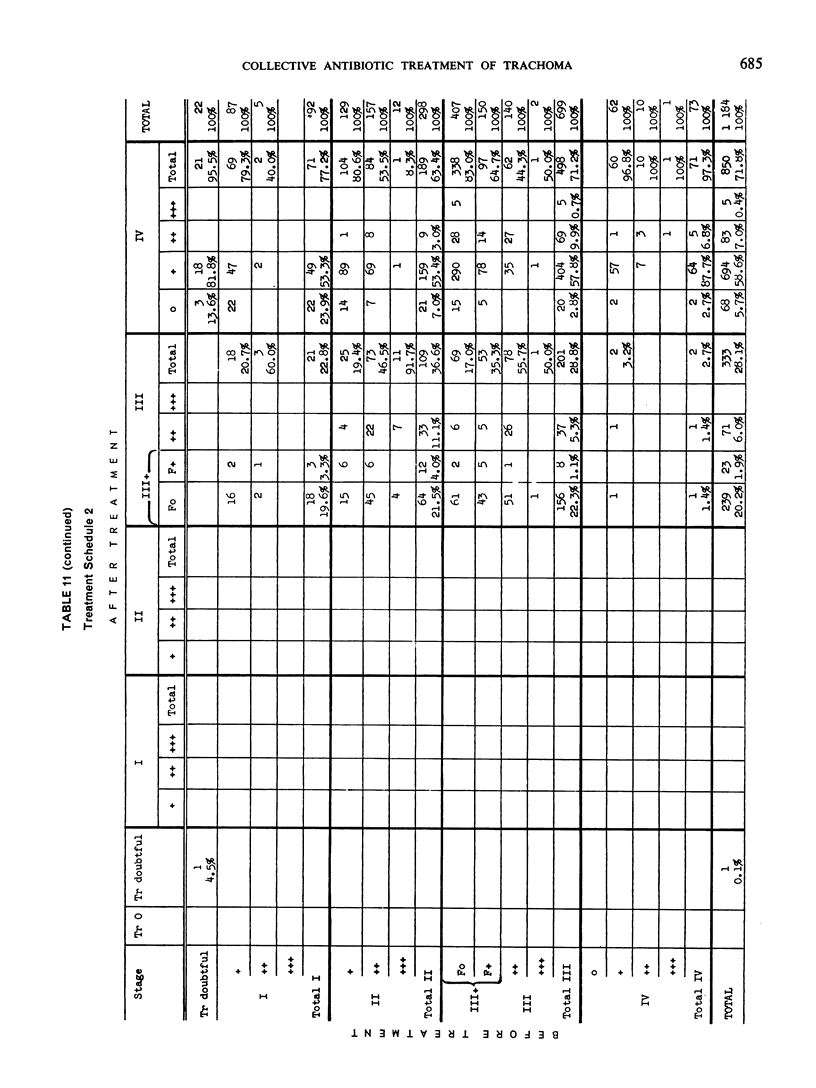
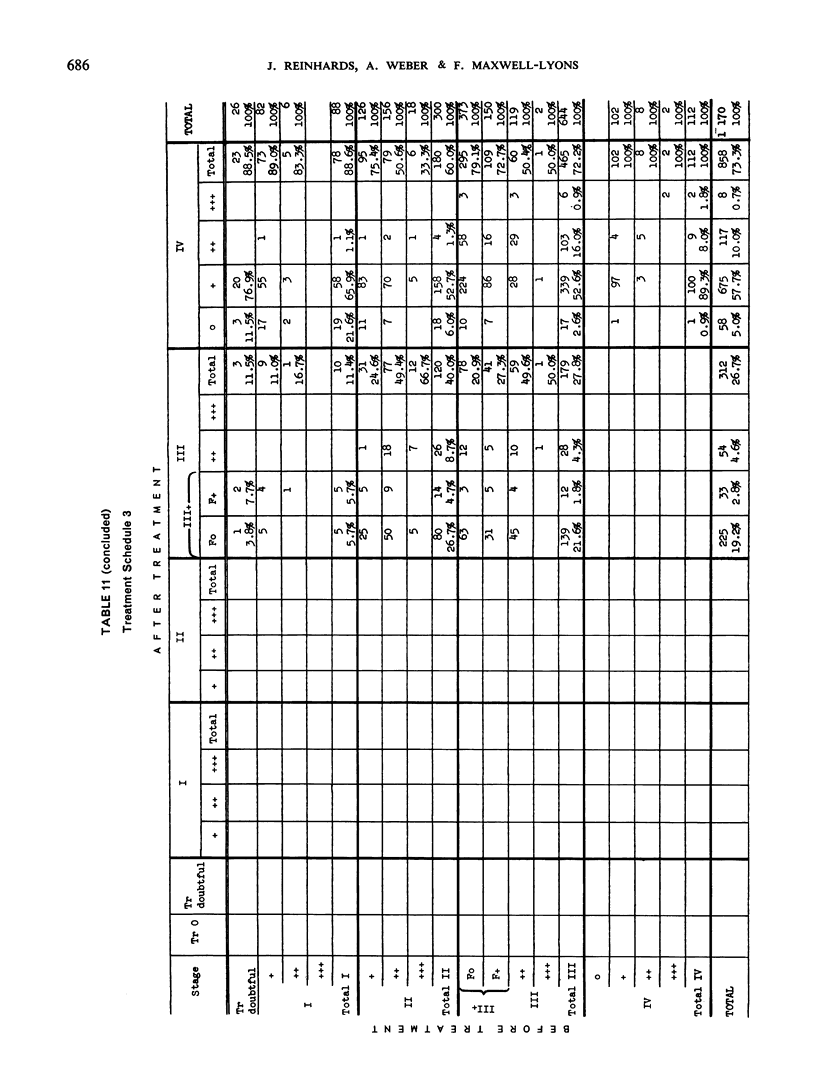
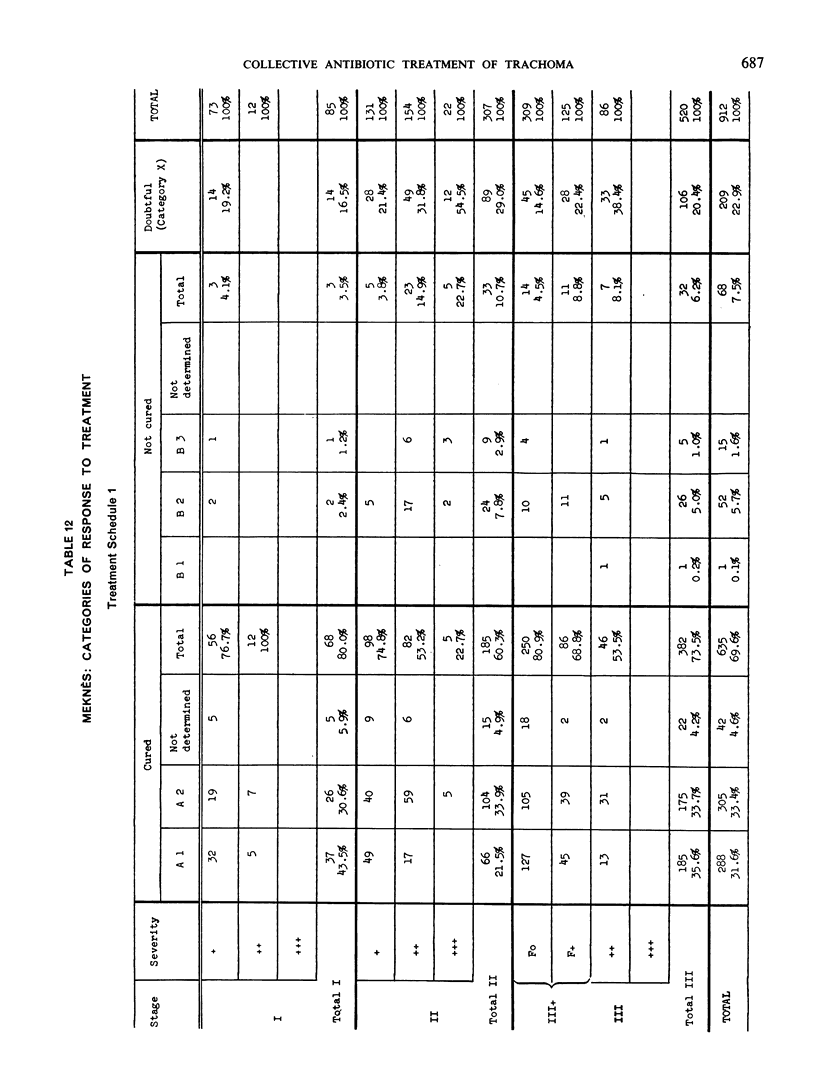
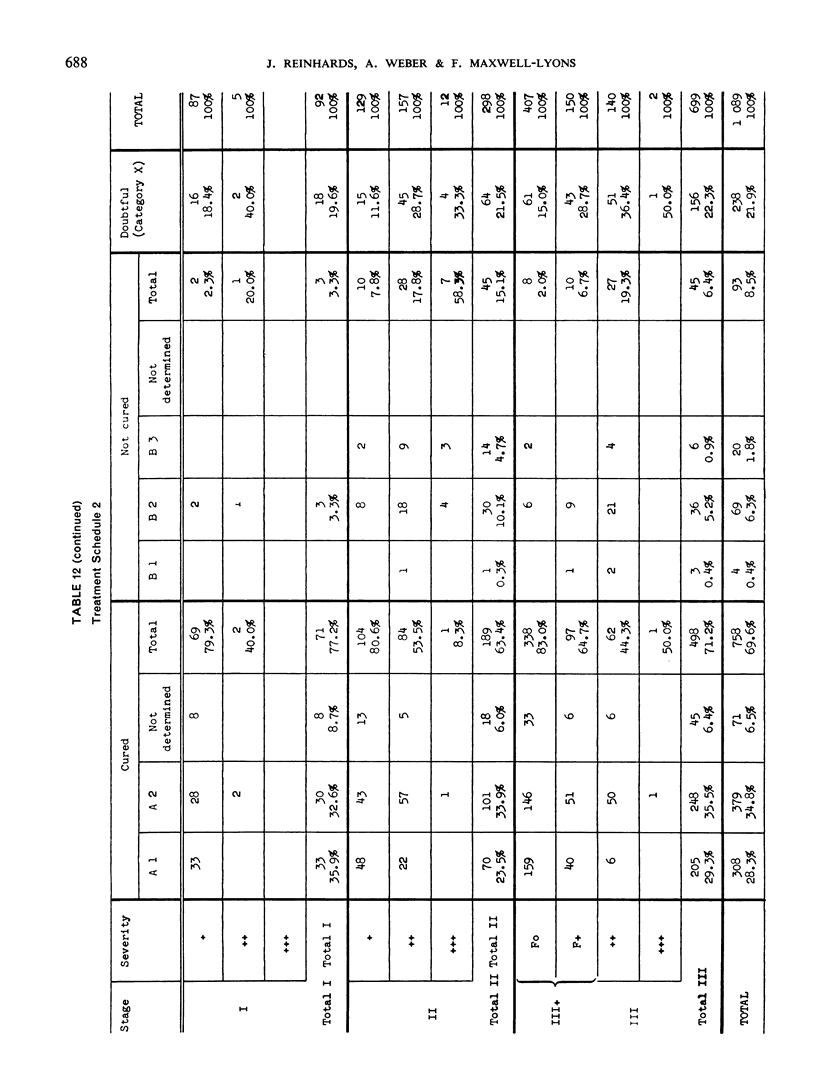

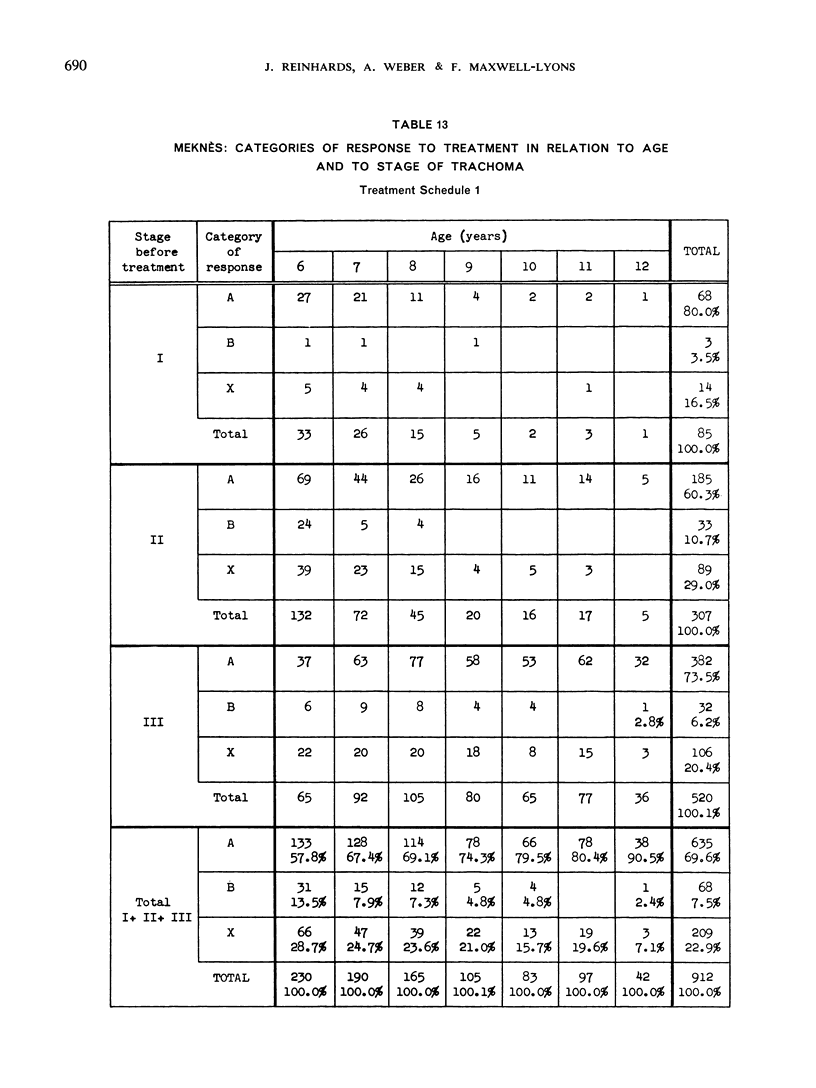
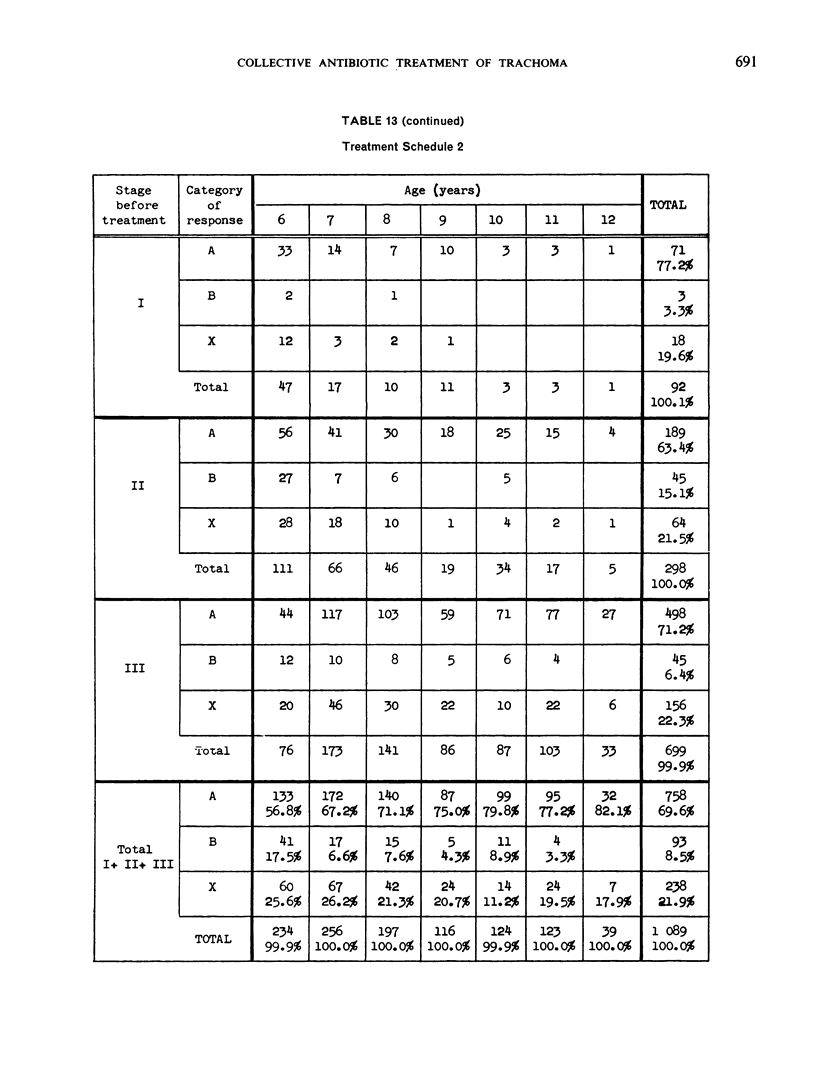
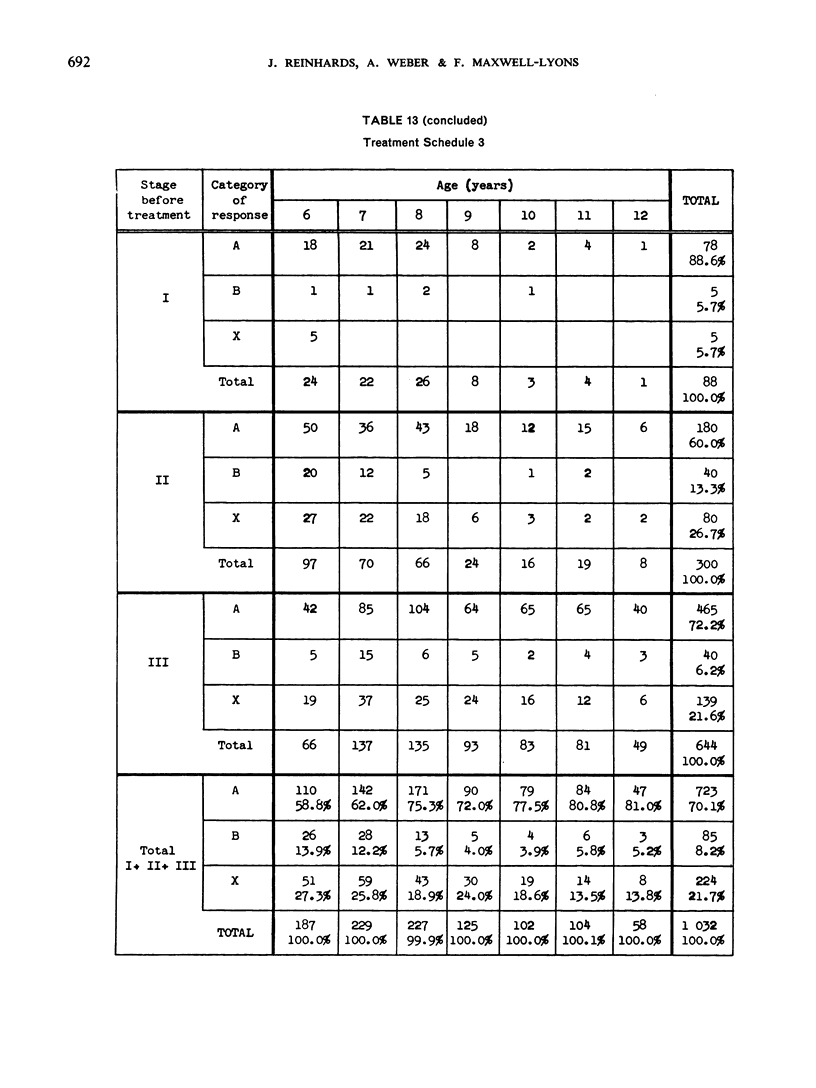
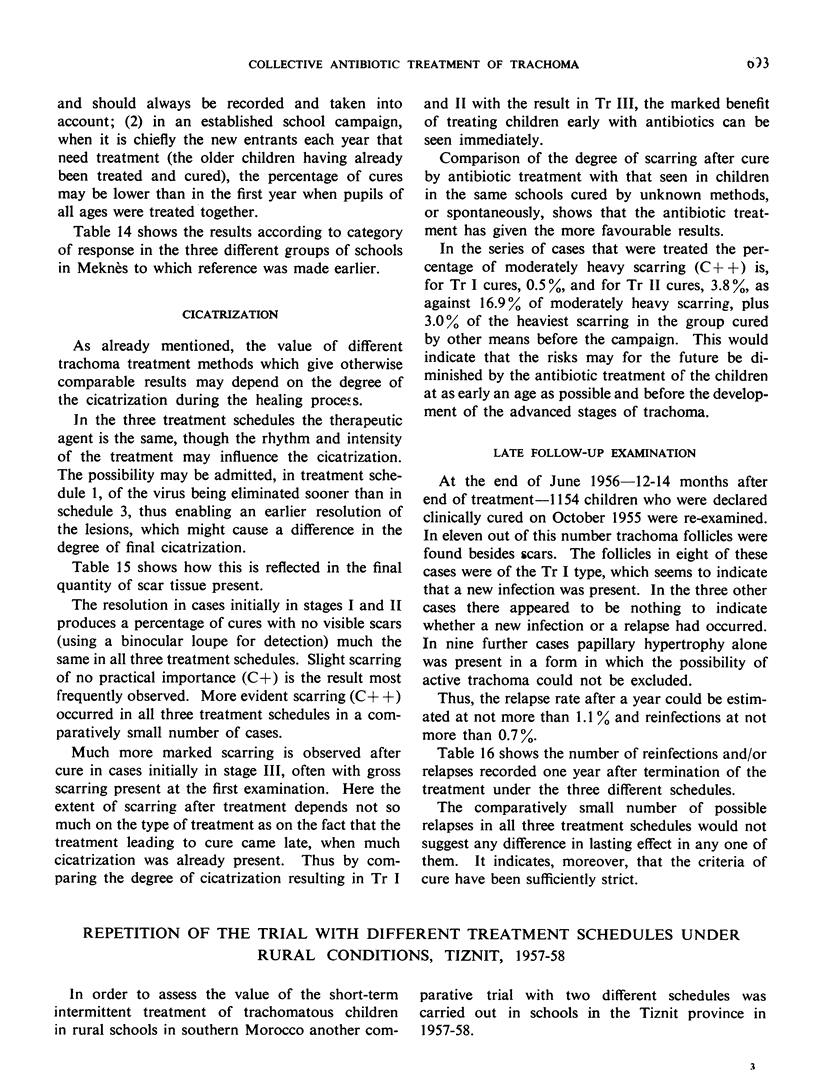
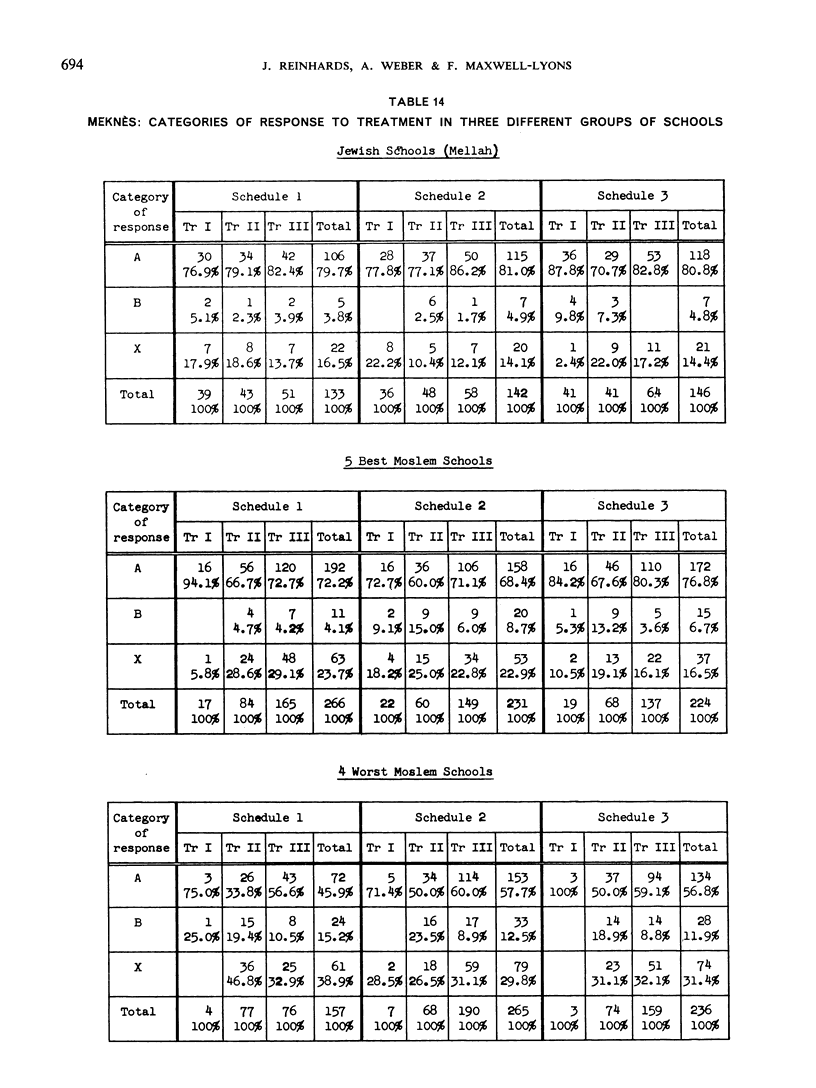
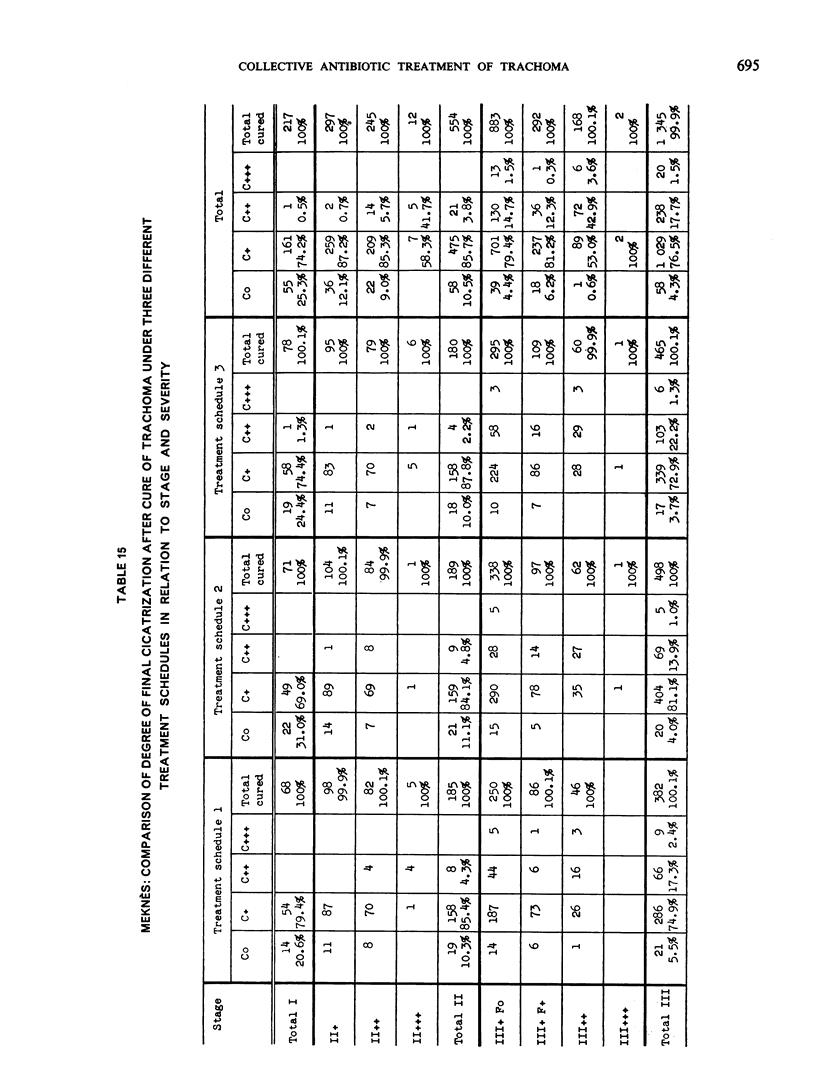

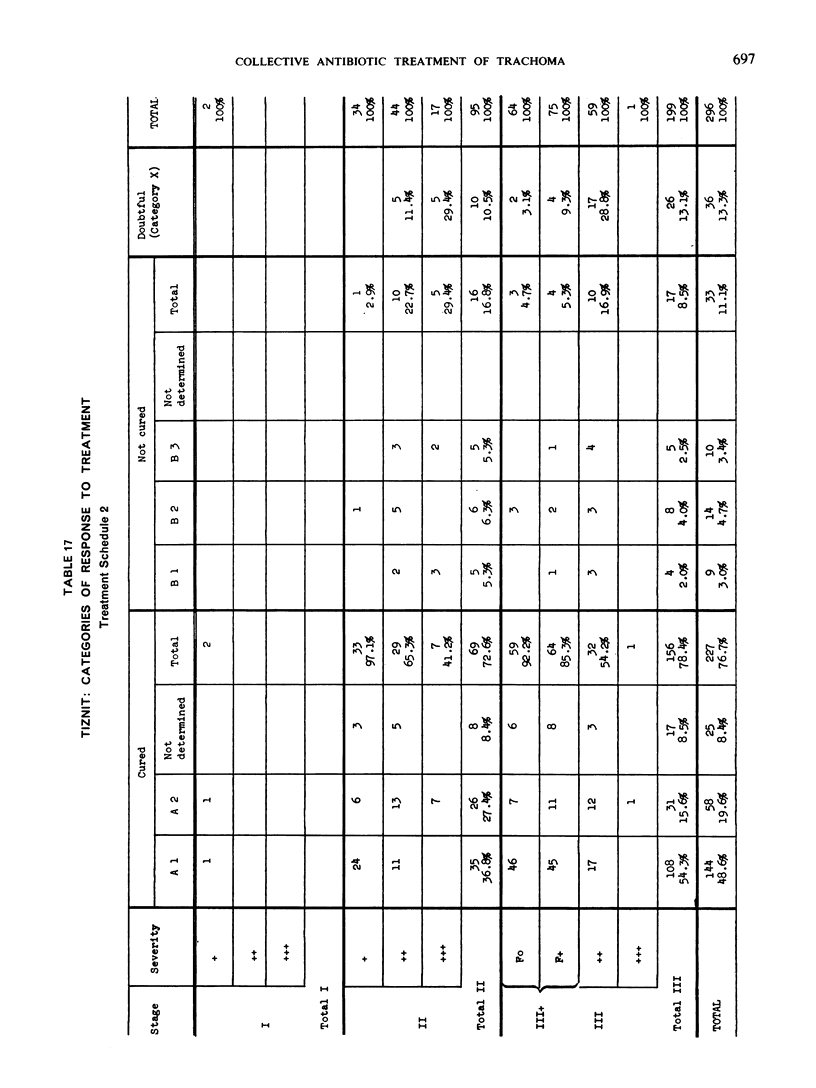
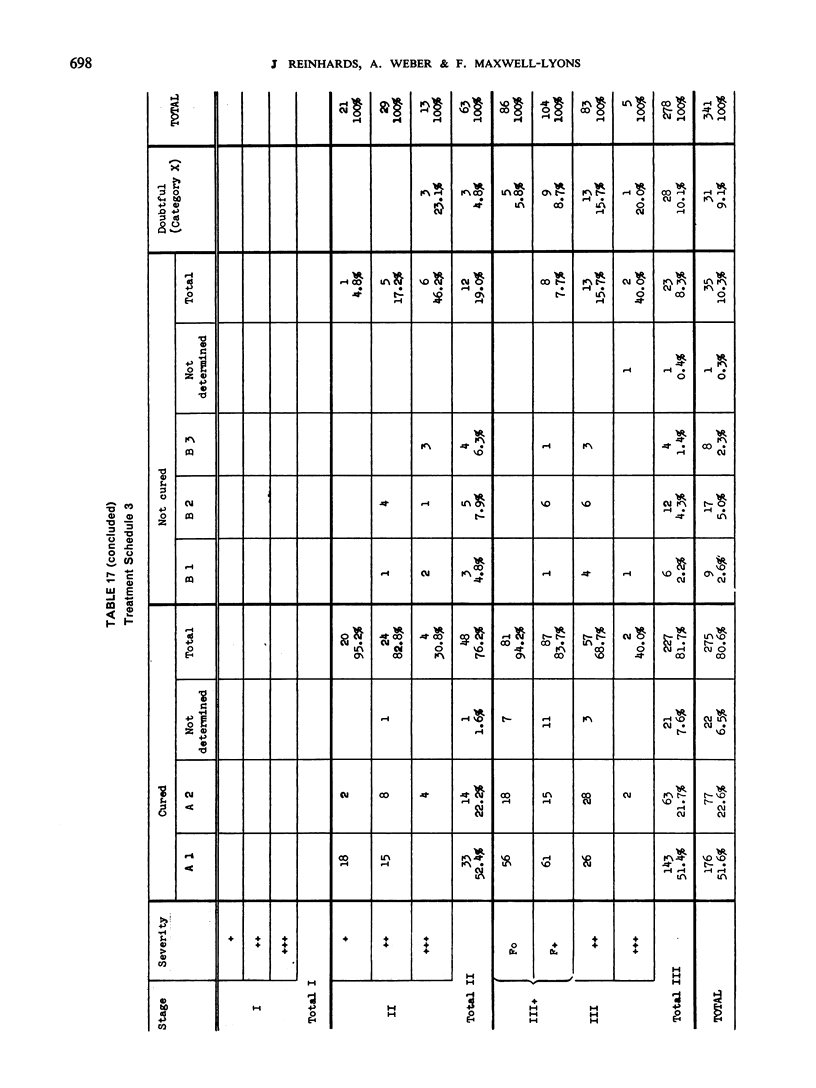
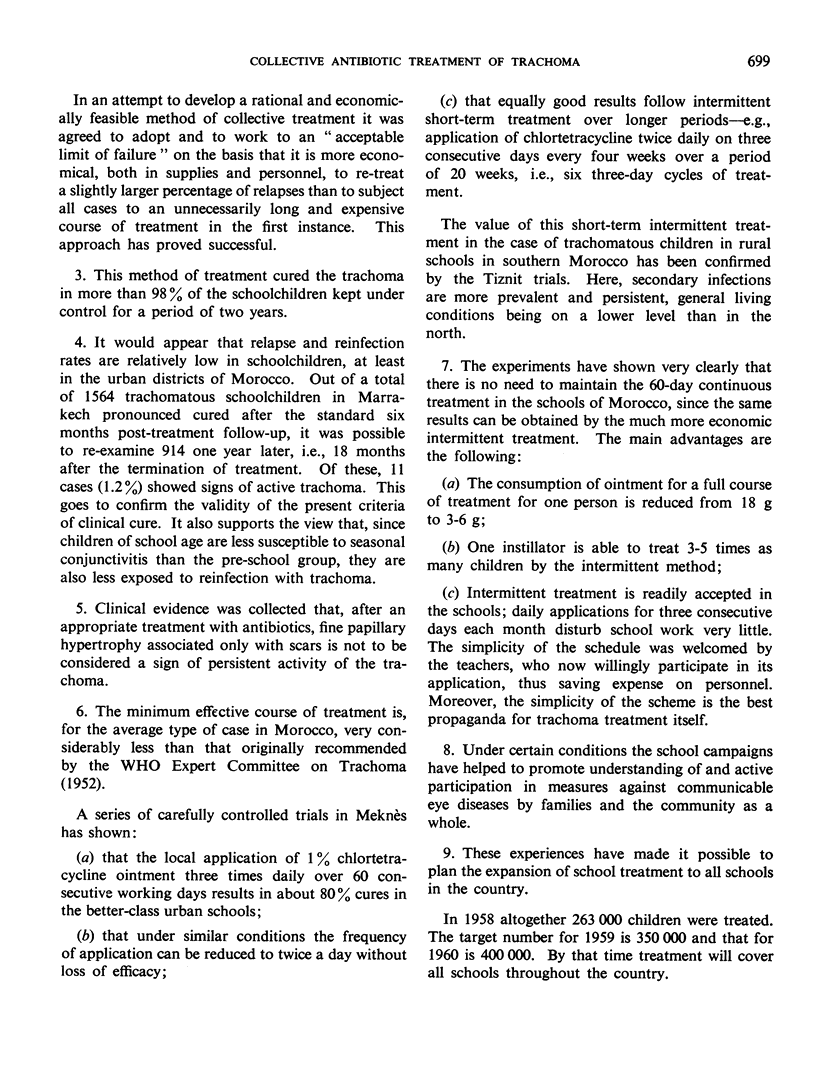
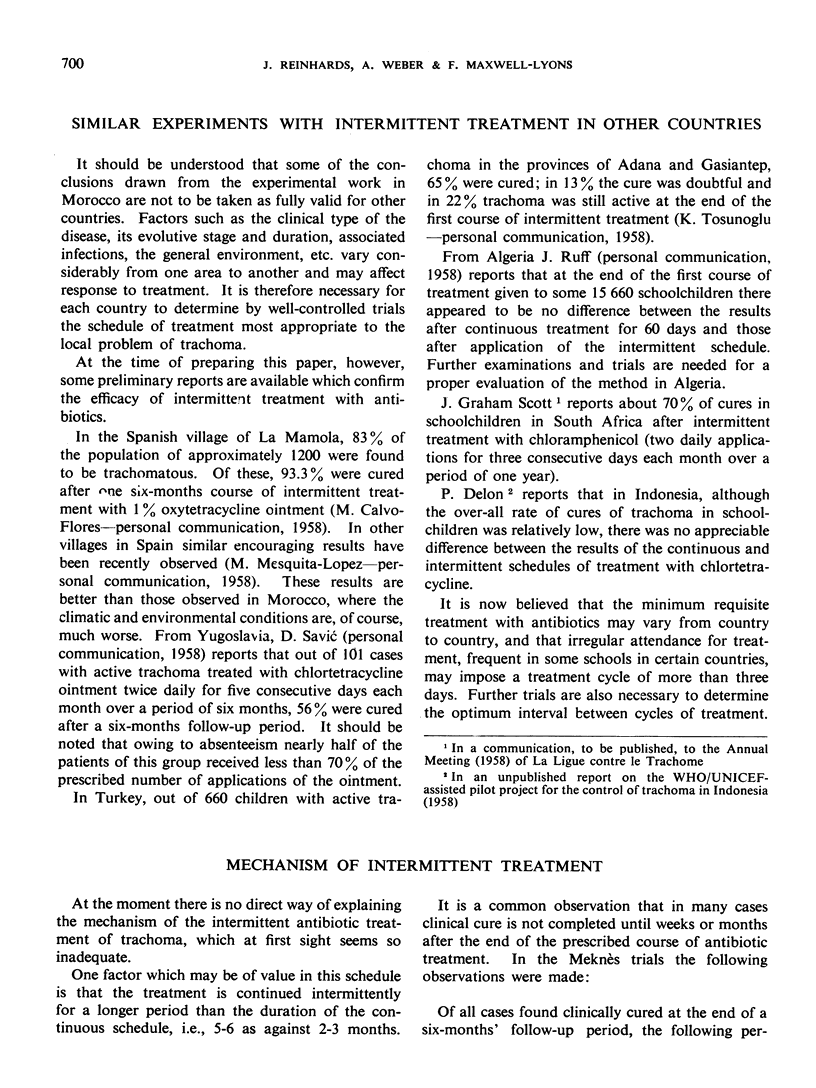
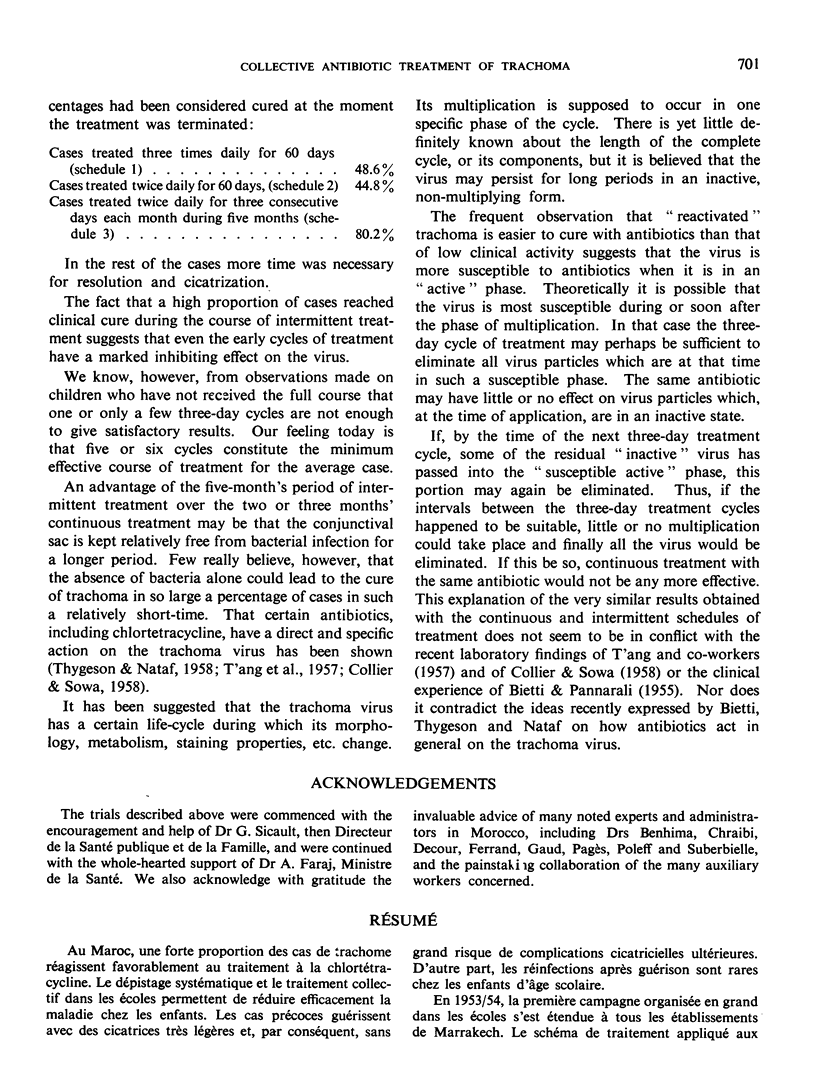
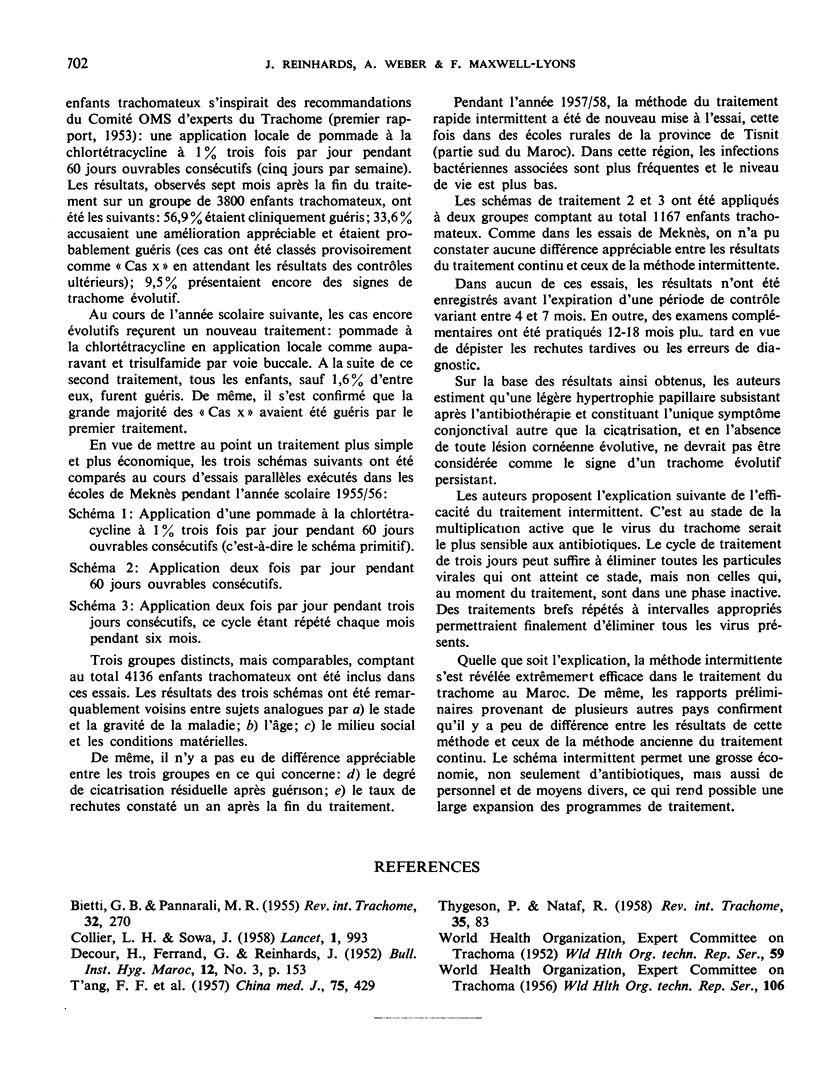
Selected References
These references are in PubMed. This may not be the complete list of references from this article.
- COLLIER L. H., SOWA J. Isolation of trachoma virus in embryonate eggs. Lancet. 1958 May 10;1(7028):993–996. doi: 10.1016/s0140-6736(58)91800-2. [DOI] [PubMed] [Google Scholar]


